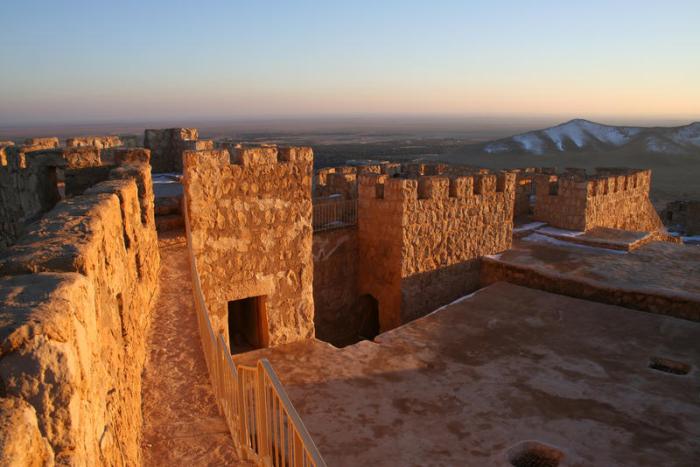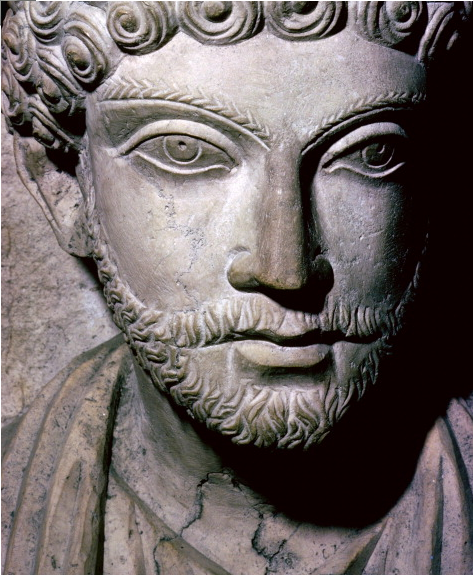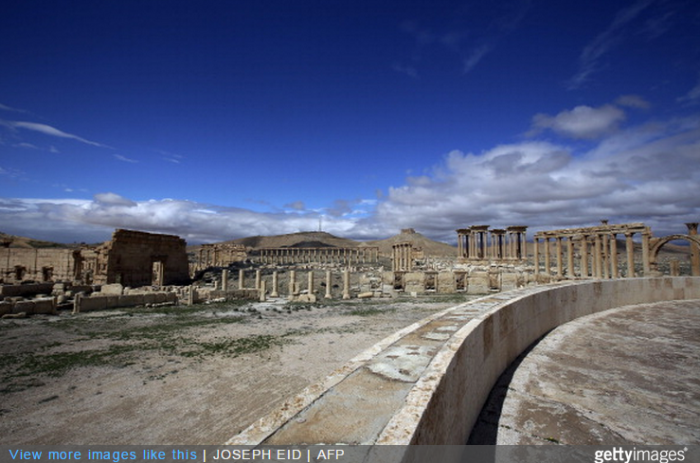
Since the ISIS takeover of Palmyra in Syria, hundreds are feared killed by the so-called Islamic State. Amateur videos posted online yesterday also appear to show buildings of the ancient city damaged in the fighting. Palmyra is considered to be one of the most important cultural centers in the world.
WNPR’s Diane Orson spoke recently with Stefan Simon, director of the Institute for the Preservation of Cultural Heritage at Yale University. He works closely with UNESCO to focus attention on what’s happening to cultural heritage sites in the Middle East, Africa and around the world.
Simon had been — until a few days before the conversation — in close contact with his colleagues in Syria. Orson asked him to explain a bit more about Palmyra, a World Heritage Site.
Stefan Simon: The whole Middle East — Mesopotamia, Syria — has buildings and witnesses of civilization which go back thousands of years. It’s often used the phrase the “cradle of mankind,” it’s definitely true. Palmyra was located on the trade route linking the Far East — linking China, Persia, India with the Roman Empire. I would call it a symbol of multicultural glory, of a time which has passed a long time ago. It rightly finds its place on the World Heritage list because of this mix of architecture. If you look at this colonnaded street which more than a kilometer long, it’s really quite unique.
WNPR’s Diane Orson: What do we know about what ISIS has done so far within the city?
We can’t really say, at this point, what ISIS has done in the ancient site of Palmyra. We can say that the war action definitely has damaged the site. What we also know is that the site has also been object to intensive looting and illicit digs, but I couldn’t really say whether that looting [was done] by ISIS or by others. We also should maybe keep in mind that we have seen all these horrible pictures from Iraq, but we don’t really know whether ISIS in Syria is actually doing the same things.
Can you tell me a little more about what happened in Iraq?
In Iraq, in a very sophisticated way, I would call it almost in a Hollywood-like way, they recorded destruction in several videos which were posted on Youtube and other channels in the beginning of this year. And then, of course, on April 11, the worst probably ever shown footage came up, which was showing the destruction of the Nimrud Palace by explosives.
Actually, in some of the videos, the speaker says in Arabic, “We were brought here to destroy your cultural heritage.” The question is actually what he’s referring to by “you.” Is it us? Is it the world? Is it the west? Is it the Iraqis?
I want to ask you – and I know this is probably a question that would involve a much longer conversation than what we can have at the moment — but why do ISIS fundamentalists wish to destroy these antiquities?
We have to look at this in a real global sense. It’s not only ISIS. If you look to Nigeria, you have the Boko Haram. We heard about massive destruction on the World Heritage Site of Sukur in the north of Nigeria. If we go back a few years, we look at what happened in Timbuktu in Mali. Let’s go a little bit more back to the bombing of Buddhas in Afghanistan in 2001, and the takeover by the Taliban.
I always remember there were paintings which were over-painted by an Afghani citizen, his name was Muhammed Yousef Asefi. He just over-painted 100 paintings from the National Museum in Kabul, which he was afraid that the Taliban would destroy. And he was just putting an over-paint on them with water-soluble paint, which he then could remove.
I think people like Muhammed Yousef Asefi are the true heroes in that. And I know that we have heroes in Syria who transported, until the very last day, objects out of Palmyra to Damascus, to safe places. But you can’t transport the colonnaded streets. You can’t transport the big tombs or the Bel Temple — it’s not possible.

So I would say, we have this religious, or Islamist phenomena of destruction of animal or of human beings in depictions.
But I also believe this is also a war on identity, and the sentiment that we are seeing now of cultural cleansing, of really trying to wipe out the identity of the opponent, and its history, its roots. This is something which we really have not yet fully understood.
It’s really our past, and our future. And it will affect, sooner or later…. may affect everybody. It’s not just about stones which are somewhere far away from our country.
By: Diane Orson
Source: WNPR
